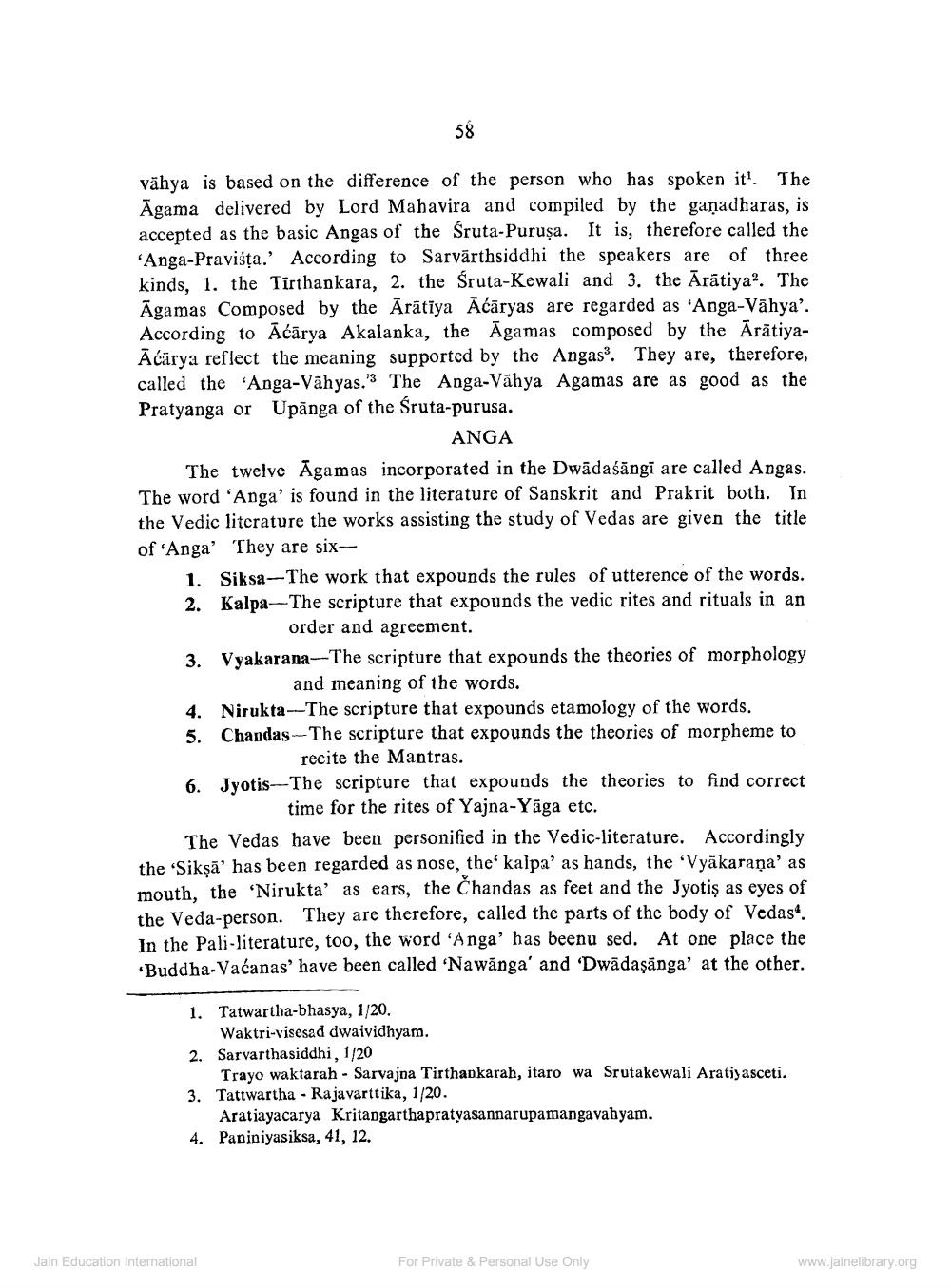________________
vähya is based on the difference of the person who has spoken it'. The Āgama delivered by Lord Mahavira and compiled by the gañadharas, is accepted as the basic Angas of the Śruta-Purușa. It is, therefore called the *Anga-Pravišta. According to Sarvārthsiddhi the speakers are of three kinds, 1. the Tirthankara, 2. the Śruta-Kewali and 3. the Ārātiya. The Āgamas Composed by the Ārātiya Aćāryas are regarded as 'Anga-Vāhya'. According to Ācārya Akalanka, the Āgamas composed by the ĀrātiyaĀćārya reflect the meaning supported by the Angas. They are, therefore, called the 'Anga-Vähyas." The Anga-Vähya Agamas are as good as the Pratyanga or Upānga of the Śruta-purusa.
ANGA The twelve Āgamas incorporated in the Dwādaśāngi are called Angas. The word 'Anga' is found in the literature of Sanskrit and Prakrit both. In the Vedic literature the works assisting the study of Vedas are given the title of 'Anga' They are six
1. Siksa - The work that expounds the rules of utterence of the words. 2. Kalpa-The scripture that expounds the vedic rites and rituals in an
order and agreement. 3. Vyakarana-The scripture that expounds the theories of morphology
and meaning of the words. 4. Nirukta---The scripture that expounds etamology of the words. 5. Chandas -The scripture that expounds the theories of morpheme to
recite the Mantras. 6. Jyotis--The scripture that expounds the theories to find correct
time for the rites of Yajna-Yāga etc. The Vedas have been personified in the Vedic literature. Accordingly the "Sikşā' has been regarded as nose, the kalpa' as hands, the 'Vyakarana' as mouth. the 'Nirukta' as ears, the Chandas as feet and the Jyotis as eyes of the Veda-person. They are therefore, called the parts of the body of Vedas In the Pali-literature, too, the word 'ånga' has beenu sed. At one place the Buddha-Vaćanas' have been called 'Nawānga' and 'Dwādasănga' at the other.
1. Tatwartha-bhasya, 1/20.
Waktri-visesad dwaividhyam. 2. Sarvarthasiddhi, 1/20
Trayo waktarah - Sarvajna Tirthapkarah, itaro wa Srutakewali Aratiyasceti. 3. Tattwartha - Rajavarttika, 1/20.
Aratiayacarya Kritangarthapratyasannarupamangavahyam. 4. Papiniyasiksa, 41, 12.
Jain Education International
For Private & Personal Use Only
www.jainelibrary.org




